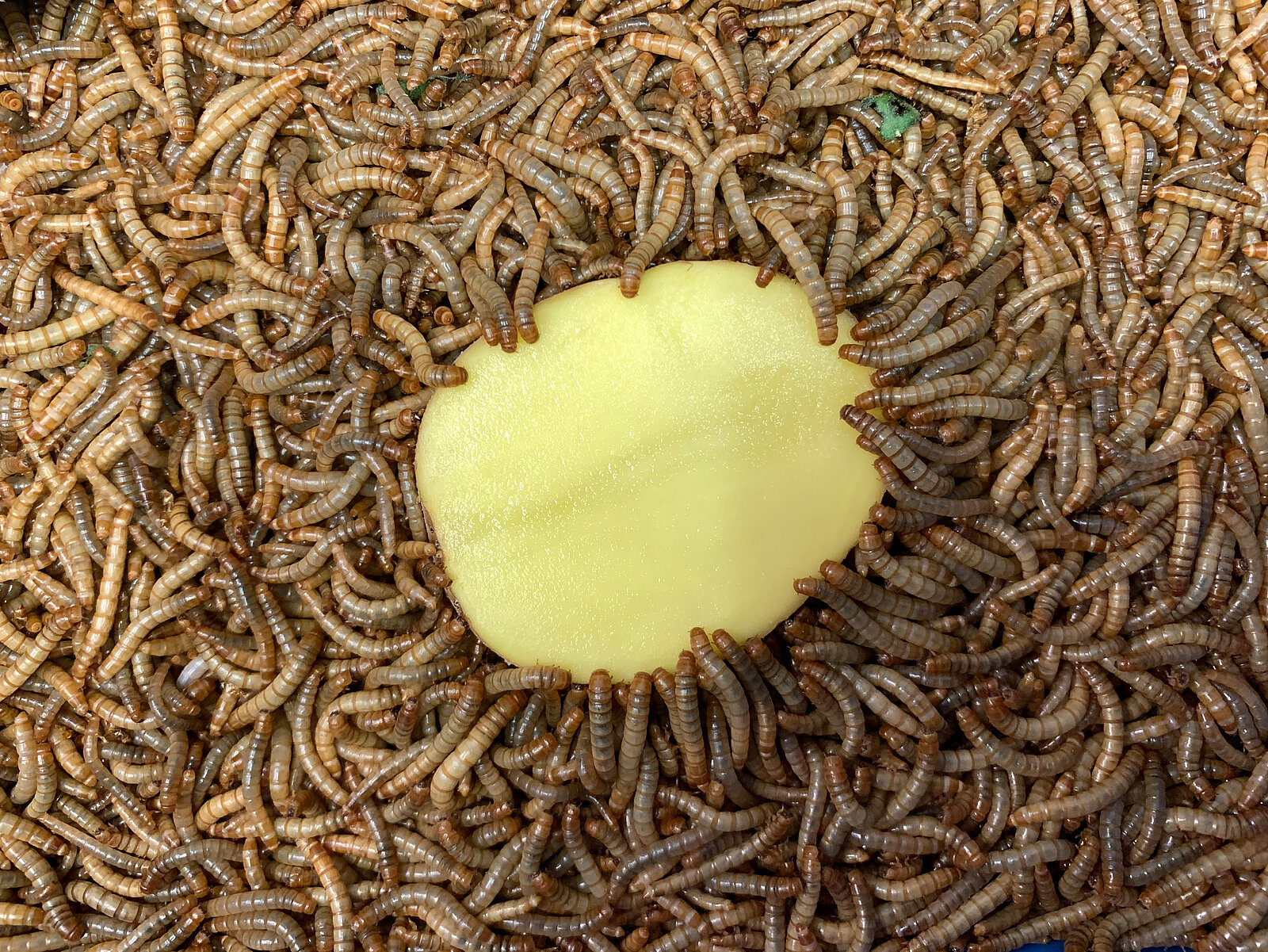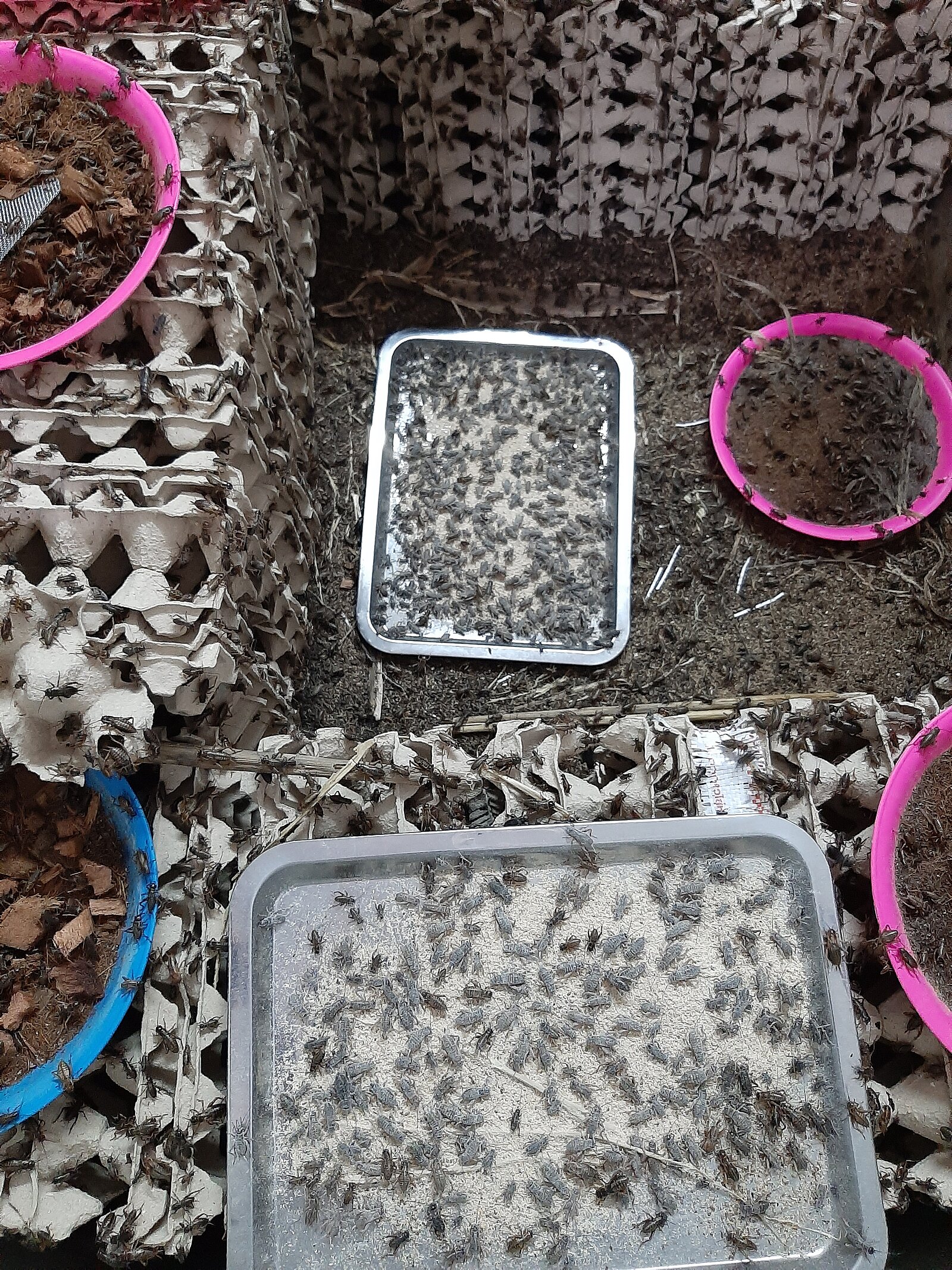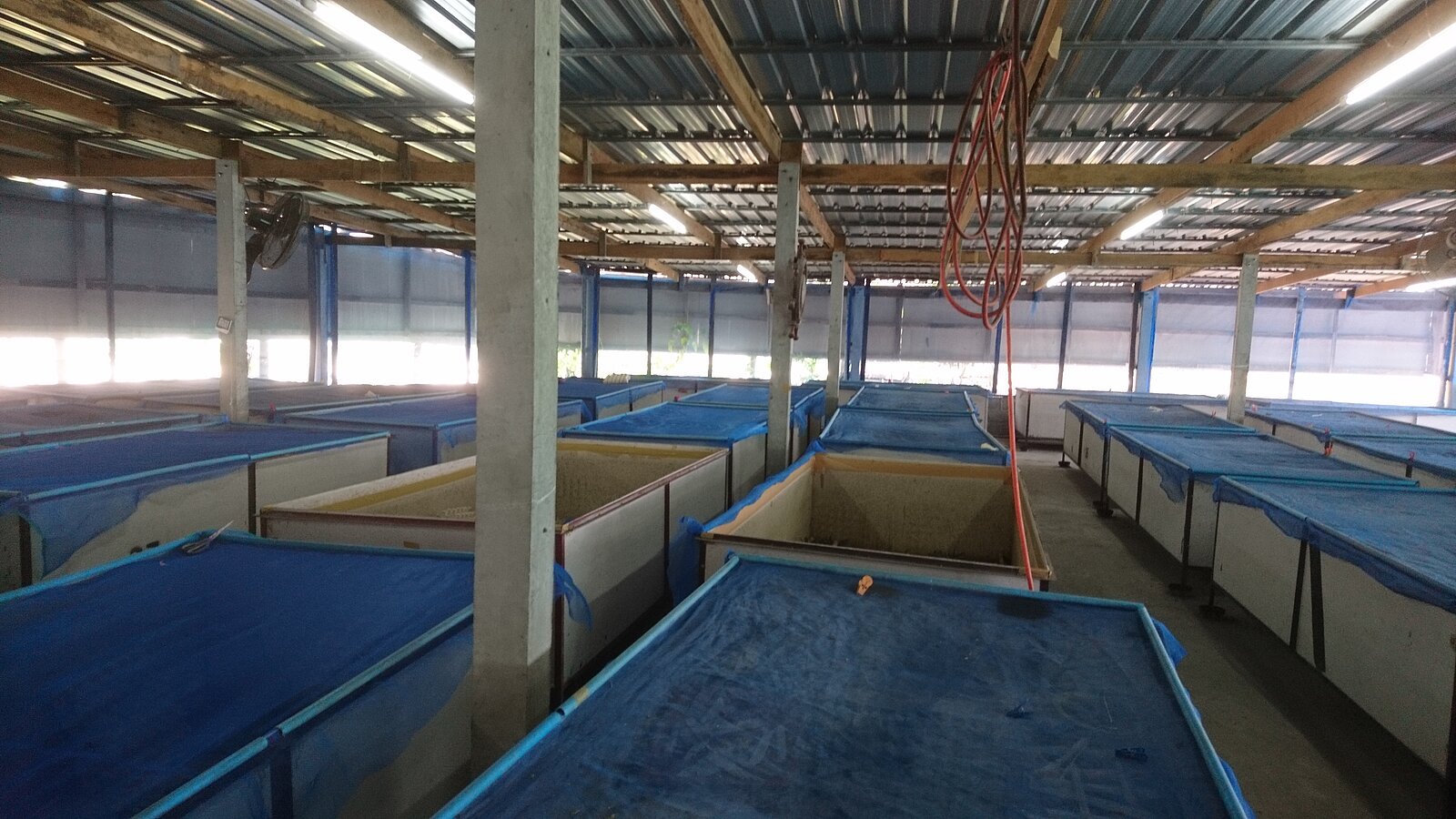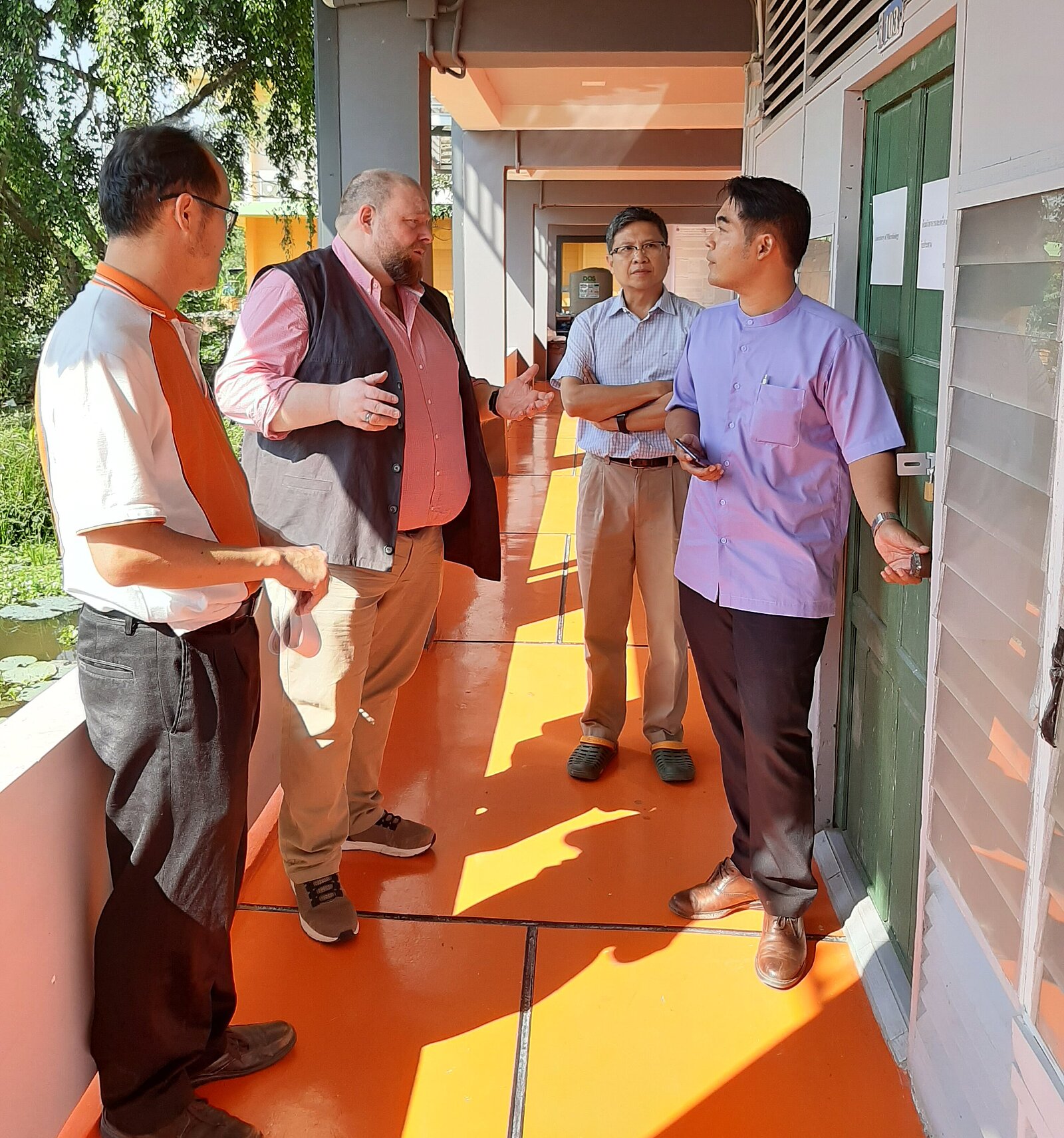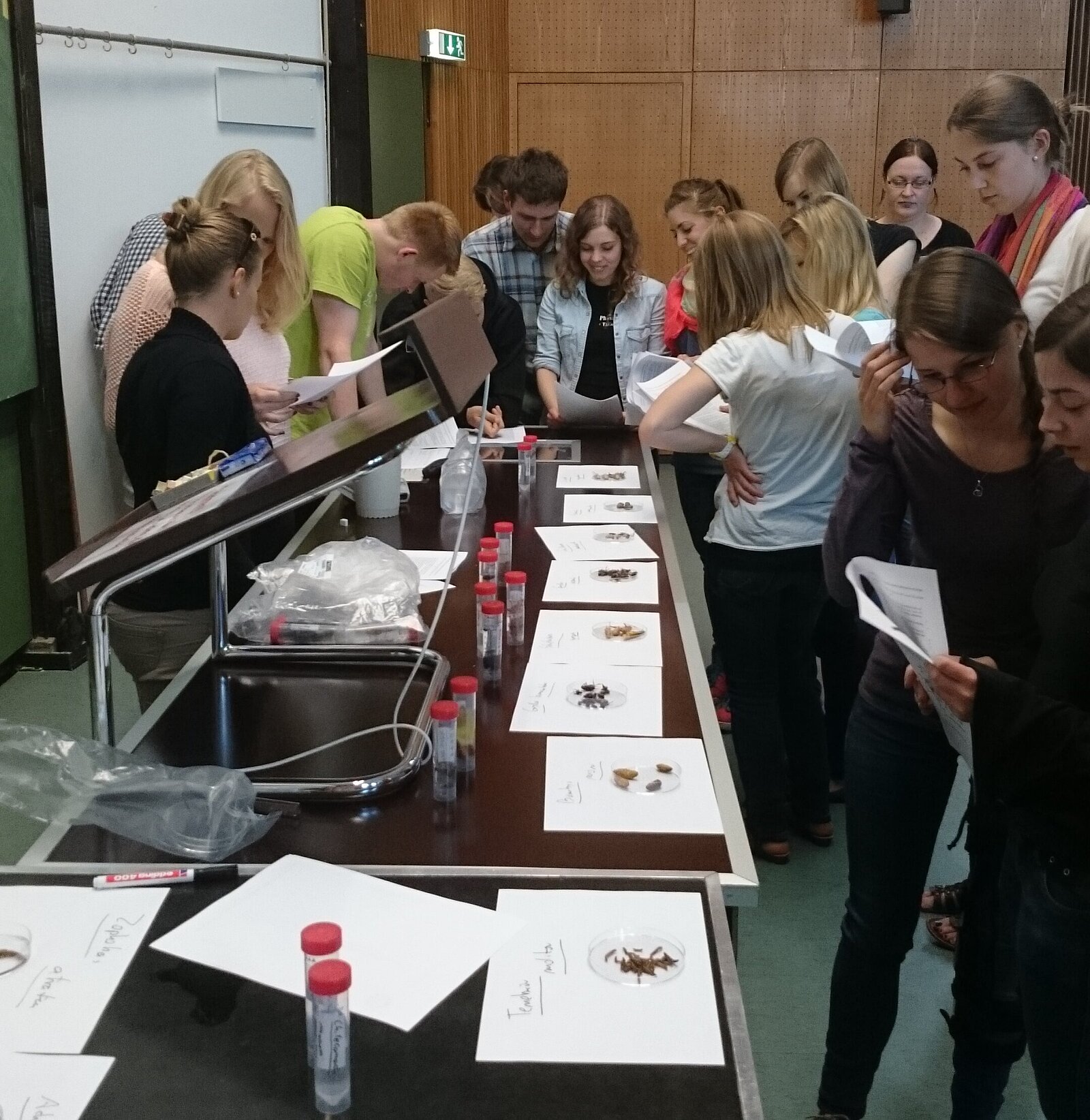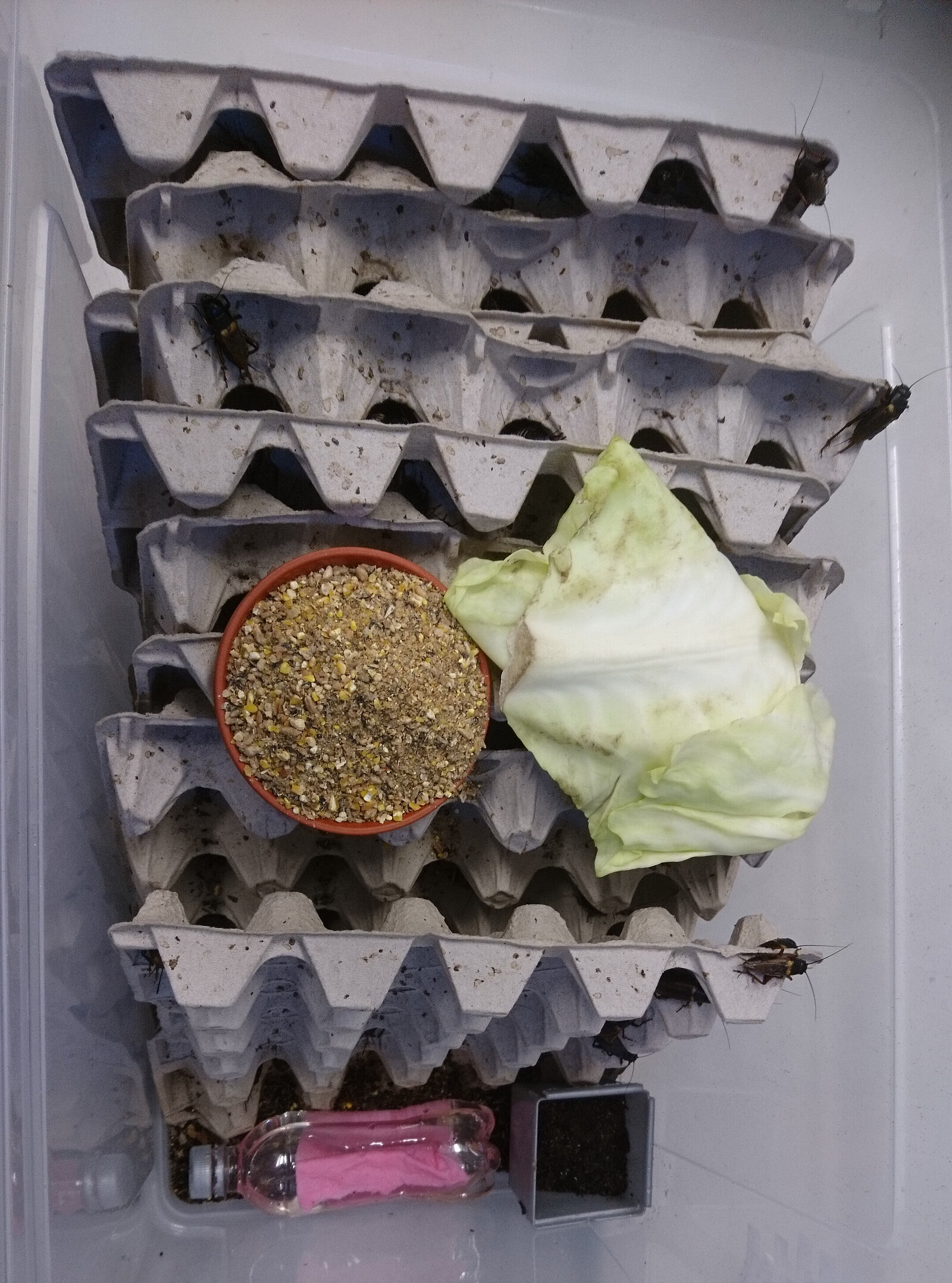
Although the department for hygiene and technology for beneficial insects only officially existed since 2019, the LMQS has been working with edible insects since 2006.
The mission and vision of the department are to promote the development of global arthropod breeding through the creation of veterinary expertise (husbandry, breeding, animal health and welfare, food safety) and thus to support users and producers.
What are beneficial insects?
Useful arthropods are species of arthropod (insects, arachnids, crustaceans, millipedes, etc.) that are bred for a specific purpose. The “oldest” beneficial insects are honey bees (Apis mellifera) and silkworms (Bombyx mori), which have been kept for around 8,000 to 12,000 and 5,000 years, respectively. Insects serve as both food and feed. Cochineal whiteflies (Dactylopius coccus) have been used as a supplier of the color carmine for over 2,000 years. In addition, many arthropods are said to have medicinal properties, some of which research has already proven. Recently, a number of other insect species have been added, which are becoming increasingly important, especially as food and feed: Crickets, e.g. crickets (Acheta domesticus), short-winged crickets (Gryllodes sigillatus), Mediterranean crickets (Gryllus bimaculatus) or steppe crickets (Gryllus assimilis / locorojo) Locusts such as the migratory locust (Locusta migratoria) and desert locust (Schistocerca gregaria) Black beetle, e.g. mealworms (Tenebrio molitor), buffalo worms (Alphitobius diaperinus) or giant mealworms (Zophobas atratus) Flies, e.g. black soldier flies (Hermetia illucens) or house flies (Musca domesticus) Other arthropods are also bred regularly, e.g. scorpions and spiders, either as pets or for medicinal purposes. In fact, the list of potentially usable arthropods is very long; 2,000 to 3,000 insects alone are known to be edible worldwide. There are also hundreds of crustaceans, around 40 arachnids and around 10 millipedes species. Certain mites are necessary for the ripening of some cheeses, e.g. Würchitzer mite cheese or mimolette from France.
What are the uses?
In addition to consumption, it can also be used as animal feed, in the processing industry, in waste management and in the pet sector. Some species, such as mealworms or soldier flies, can be used for different purposes, for example as food or feed.
Collect or Breed?
Apart from the commercial aquaculture of some crustacean species and the breeding of feed insects for the pet sector, most of these species were used more traditionally, i.e. collected from nature. This traditional way of use has arisen over thousands of years according to the “try and fail” principle and basically balances the supply of available insects and safe use by humans. However, external influences change this balance, e.g. through the intensification of collecting, environmental changes and the occurrence of food-relevant changes to which traditional safety concepts have no answer, e.g. chemical residues.
In the long run, there are two problems:
- Natural populations can be endangered, e.g. tarantulas in Cambodia and Thailand
- As with game, the food hygiene of wild-collected insects is less assured; For example, grasshoppers collected from the Sahel zone may be contaminated with pesticides.
In this respect, the breeding of these animals is a future-oriented type of use. Depending on the species, breeding arthropods can be cheaper, more sustainable and more ecological than conventional livestock species. However, there are currently some legal hurdles so that not all arthropods can be used as food or feed.
What does the ILMQS do in the area of beneficial insects?
The beneficial insect hygiene and technology department primarily, but not exclusively, deals with the use of insects as food. Like other departments, it conducts research, services, consulting, teaching and training.
- A central point of the department is the TiHo insectarium. The following species are currently kept there for experimental purposes:
- Mediterranean cricket (Gryllus bimaculatus)
- Steppe cricket (Gryllus assimilis / locorojo)
- Mealworm (Tenebrio molitor)
- Giant mealworm (Zophobas atratus)
- Buffalo worm (Alphitobius diaperinus)
- Black soldier fly (Hermetia illucens)
- As part of teaching and advanced training, beneficial insect content is conveyed to veterinary students, VMTA pupils, practitioners and veterinarians in the public sector at home and abroad. The focus is on introductions to beneficial insects as well as special topics such as product knowledge, breeding systems, analytics and legal aspects.
- The service includes chemical, microbiological and molecular biological analysis of insects and their products.
- In the area of advice, the department serves as a contact point for everyone looking for guidance in the area of beneficial insects. In recent years these have primarily been official veterinarians, but also interested producers and consultants. The Lower Saxony Ministry of Agriculture and the European Food Safety Authority (EFSA) also invited invitations to take part in a legal assessment, as well as to consultant meetings with representatives of the student initiative "Enactus - Insectus", the Federation of Veterinarians of Europe (FVE) and the International Platform of Insects for Feed and Feed (IPIFF) ), the European interest group for beneficial insect breeding.
- Research on food insects began in 2006. Since then, many areas have been examined, such as chemical composition, microbiological risks, legal framework conditions, sensory properties and consumer acceptance. The IFNext (Link) project, funded by the BLE, is currently being worked on, which, together with scientists from Cambodia and Thailand, is promoting sustainable insect breeding for small rural farms in order not only to improve nutrition for the participating mothers and their children, but also an economic one Bringing profits through the sale of novel insect products.
The field of arthropod breeding is a very young field of activity, and just as veterinarians accompany regular livestock farms (poultry, pigs, cattle, etc.), this is also necessary for beneficial insects. For this reason, the International Network for Productive Insects ‘Health and Welfare (INPIHW) (Link) was founded in 2019, which is organized by the department. It includes colleagues from all over the world who are involved in beneficial insect breeding in a variety of ways and act as contact persons for veterinary matters.

Researchgate-Link https://www.researchgate.net/profile/Nils-Grabowski
